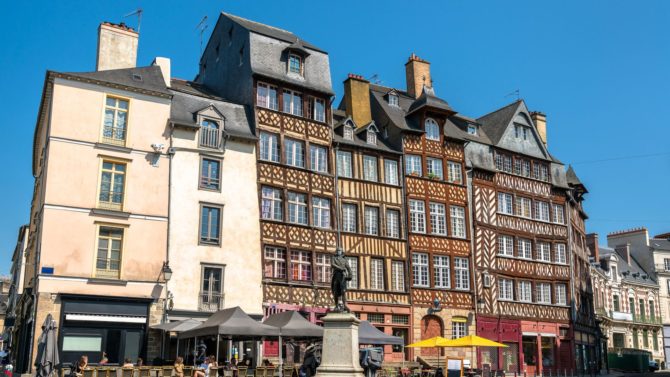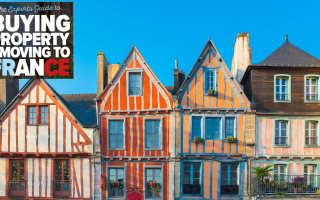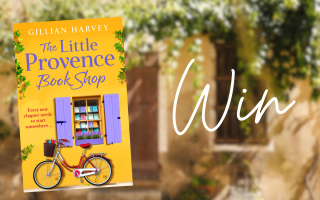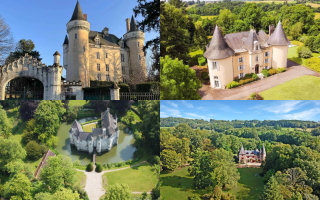French property: Where is best to invest?

Most British buyers focus on purchasing homes in the French countryside or small towns where they can enjoy holidays or a gentler pace of life. But are they missing out on potentially great investments?
The French themselves are very keen on rental properties as a long-term investment. It’s quite normal for a middle-class family to have one or two flats that they rent out. But they will usually be buying in a big city or at least a larger town – and most often, buying flats rather than houses. Generally, apartments deliver a higher rental return, as well as having a lower entry ticket.
They will also, very often, be buying in new developments, particularly if they want to benefit from the Loi Pinel tax break. This gives relief from income tax for investment in new-builds in selected areas, related to a percentage (from 12-21%) of the purchase price. However, the property has to be rented out for at least six years, and the best tax break comes if you commit to holding it for 12 years. Maximum rent levels, and the maximum income of tenants, are also controlled.
Large developers like Nexity have advisers who can help investors make the best decisions for both their budgets and their tax liabilities, and also offer rental management for those who want a completely passive investment.
With mortgage rates just over 1%, and gross yields on residential property generally from 4% up to 8% (quite a bit higher, on average, than in the UK), it makes good sense to invest in la pierre – we don’t say bricks and mortar over here!
City picks
Where will your money go furthest? It depends on whether you want as much income as you can get, or a balance between income and capital growth. If you’re just after income, for instance, St-Etienne is one of the highest yielding cities in France, with gross rental yields from 8% up to 11%, and with low prices (the average is €1,173/m2 – a 10th of what you’d pay in Paris!). However, the south-eastern city suffered badly in the credit crunch and its population is in long-term decline, although that might be turning round.
You might see better capital growth elsewhere. Brittany capital Rennes and Maine-et-Loire capital Angers both have positive demographics, and good yields, at 8.2% and 6.2% respectively. They are also less than two hours from Paris by direct train. And your entry ticket in Rennes could be as low as €100,000. The Norman port of Le Havre, with yields as high as 7.6%, and the old Lorraine capital Nancy with over 6% average, are two other interesting markets for the income investor.

Paris remains hot with investors, as a safe haven, particularly in the central arrondissements; but yields are the lowest in France at 3%. And right now, buyers are getting quite choosy. Susie Hollands of Vingt Property (currently searching for a home for footballer Lionel Messi) says that an even higher premium is now attached to properties with a balcony, terrace, garden, or close to the river or a park. She adds that average prices can be misleading, as lower floors sell for less and gardens can add 10-20% to the price while a gloomy courtyard can take 15% off. As for buildings without a lift, the sixth-floor flat will be worth a good deal less than in buildings where you don’t have to take the stairs, and it’s flats like these that have been showing a bit of price weakness recently.
The entry ticket to Paris is hefty. Property on average sells at €11,000/m2, but that goes up to €40,000/m2 for prime properties. Smaller properties also tend to sell for higher prices per square metre.
Many happy returns
Mickael Zonta, at Investissement-Immobilier, says that whichever major city you decide on, it’s better to buy outside the centre if you want a good income, or to buy in smaller cities like St-Etienne, Roubaix or Libourne. “The centre is where you invest for capital preservation,” he says. There are still some opportunities in markets like Marseille and Lille, but you really have to put your research work in, he adds. “You need to know your neighbourhoods, to head for the areas which are being regenerated. In Paris or Marseille, the rent can fall €200 if you just cross the street.”
Mickael recommends buying an entire block of flats to get better returns. This may sound out of your reach, but a townhouse converted into three flats in some French cities can cost €150,000 or even less if it needs renovation. Colocation (flat share) is another market that is more profitable than regular rentals, particularly in Lille and Marseille, he adds.
Choosing to let furnished can enhance returns even more, with rents 5-30% higher for the same property, depending on local demand.
For French-resident investors, the status of LMNP (Loueur Meublé Non Professionel) has some major tax advantages, too. If you are UK-resident, your tax liability in the UK could be greater than in France as you won’t be able to use Pinel and LMNP tax breaks to set against your income. French tax tends to treat landlords quite gently, and in particular you can still deduct financing costs from your rental income – not the case in the UK. But tax is a tricky area so make sure you take good advice.
Martin Menez, of rental investment experts Bevouac, also advocates buying resale properties that need renovation. “Old properties sell at a 20-30% discount to new ones,” he explains, so you’ll usually get a better income yield from them.
Again, French residents get a tax break as all the renovation costs can be set against your tax for the next 10 years.
Detailed data
Bevouac grinds data to select the cities it will cover, based on a number of criteria such as population growth, employment, the ratio of renters to owners, and average income, as well as property price trends and yields. It then analyses each area of the city – and its research underlines the importance of knowing different neighbourhoods in detail. For instance, Lille Sud offers gross yields of 8-10%, has good metro (underground) access, and is close to the medical faculty of the university, with strong rental demand, though it’s a bit down at heel. On the other hand, St-Maurice is highly sought-after by young professionals, with green space and good transport links, and you can still get 6-8% yields against just 4-5% in the historic centre, with a good chance of capital appreciation.
Things can change quickly in the rental market, too. Three or four years ago, Haute-Vienne capital Limoges ranked together with St-Etienne at the top of the high-yield tables. But now, says Bertrand Fournier of ORPI Agence des Arcades, prices have risen, and investors are looking at an average of 6-7% gross.
“It depends on the quality of the property, and on the area,” he says. “You could get 10% in one of the areas north of Limoges, but they’re not particularly sought-after.”
Doing up a faded Limoges property is one way of getting extra returns – but it’s not as easy to find such apartments as it used to be, and if there’s one on the market you need to be fast. The plus side of that, of course, is that once you have updated the property, it will let fast.

Property partners
Given the need to act fast – sometimes seeing the property the day it comes on the market – is buying a French rental property really feasible for a non-resident? Perhaps not if you’re planning on doing it all yourself. But there is a huge support structure of enterprises like Investissement-Immobilier, Bevouac, Masteos, ParisRental.com and Immocitiz which can provide a turnkey investment service. Most of them concentrate on a number of major towns where they have particular expertise. An adviser works with each investor to define a project based on funds available and desired return.
There is a cost to such services, of course. But they can find off-market properties, and they can act fast. They will also take charge of the renovation and furnishings to ensure the property is exactly right for the target tenant. Or you can use the services of Nexity or one of the other big developers to find a new property that fits the bill.
Other options
Of course, you could buy a holiday home with rental opportunities, such as outbuildings that could be converted to gîtes. This gives you the opportunity to develop at your own pace, though don’t underestimate the work involved – many do.
You need to check the PLU (Plan Local d’Urbanisme) to see if you will be allowed to develop the outbuildings. That’s the same should you decide to buy a large town or village house and split it into two separate dwellings, renting one out. Usually, you wouldn’t need planning permission unless you were making external changes, but every commune seems to have different rules.
Finally, if you are already living in France and despairing at low interest rates on your bank account, you might consider a rather different route to property investment, through an SCPI (Société Civile de Placement Immobilier). Lists of these funds, which invest in commercial as well as residential properties and hotels, regularly appear in French finance publications.
Most yield around 4% to 6%. Unfortunately, they are incredibly hard work to buy, with a lot of paperwork up-front. But once you’ve bought your units, all you have to do is sit back and wait for your quarterly payments. So much less work than fixing that dripping tap or finding a reliable new tenant!
Find an investment property on FrancePropertyShop.com
Share to: Facebook Twitter LinkedIn Email


